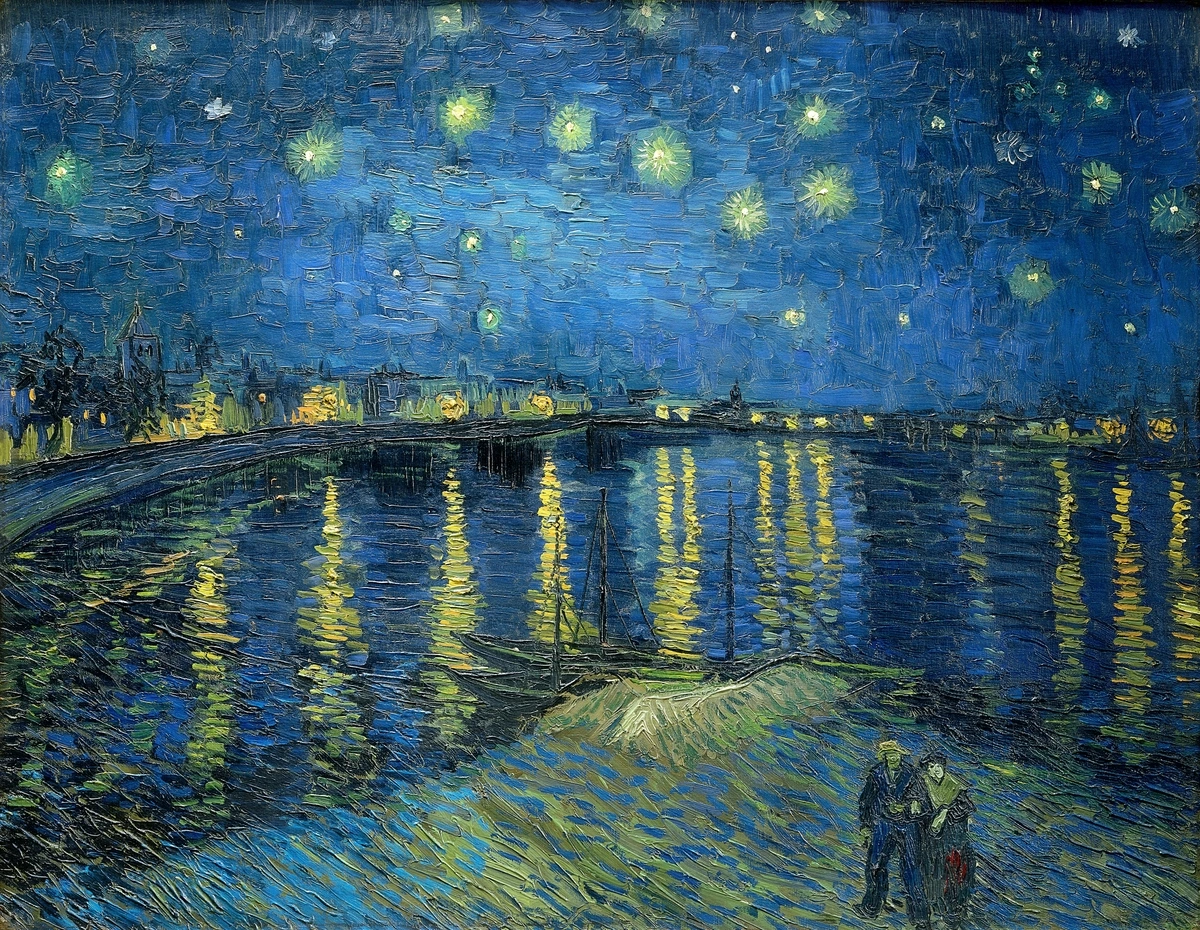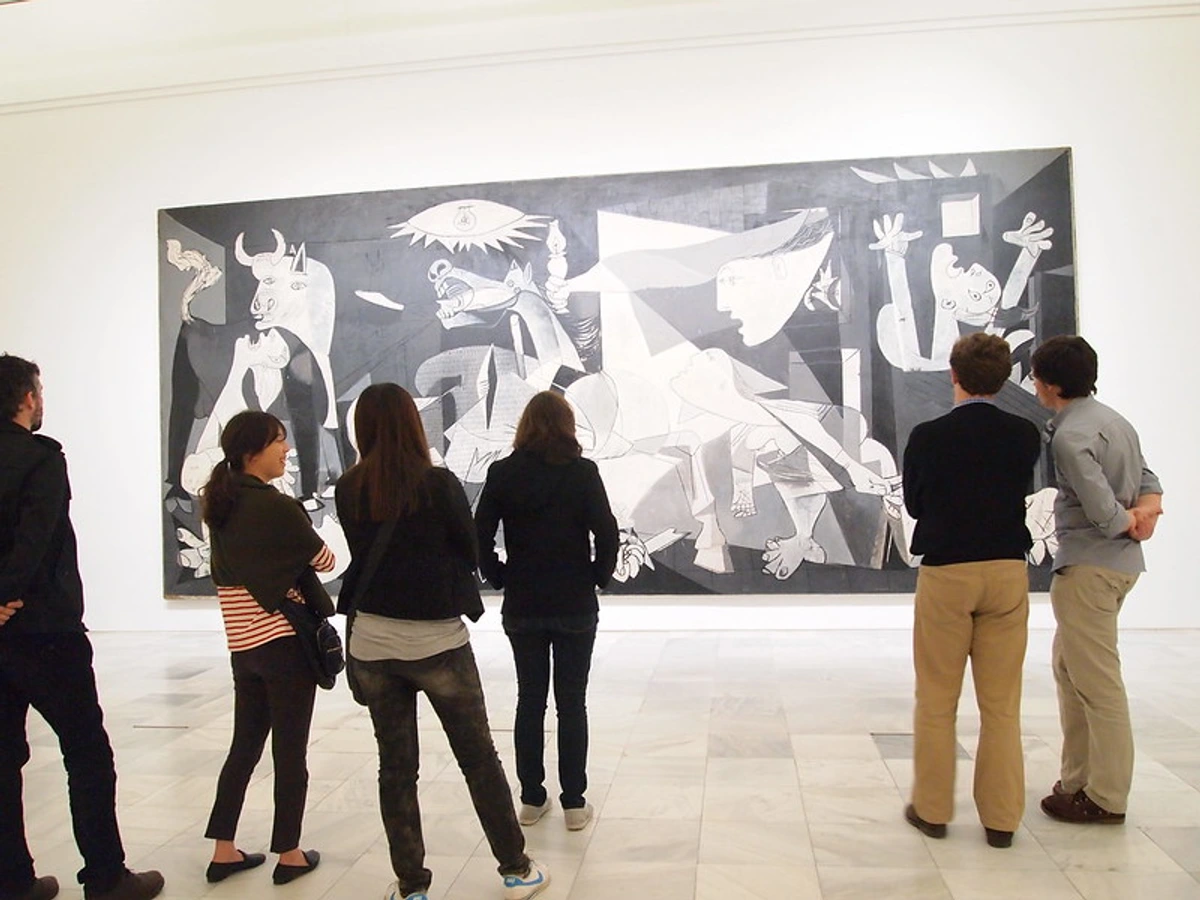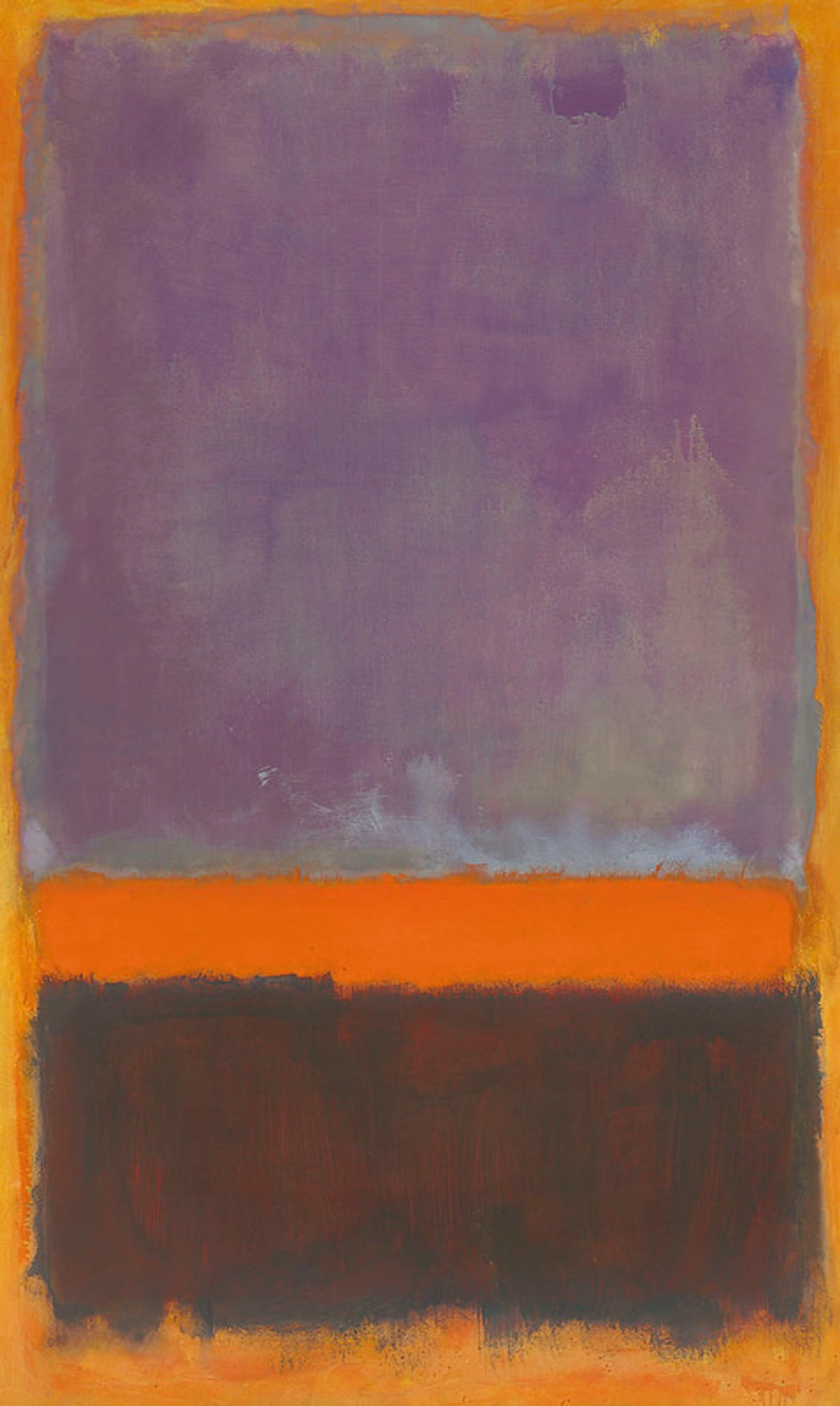
The Silent Language: Unlocking Visual Storytelling in Art
Dive into the silent language of art. An artist shares personal insights on how visual elements, famous examples, and even abstract forms tell powerful stories without words.
The Silent Language: Unlocking Visual Storytelling in Art
Have you ever stood in front of a painting, maybe one you've never seen before, and felt... something? A pull, a sense of drama, a quiet sadness, or maybe even a chuckle? That's the magic of visual storytelling at work. It's the artist speaking directly to your gut, your heart, your history, bypassing the need for words entirely.
I remember standing before a large abstract piece years ago – just blocks of color and texture, no recognizable objects at all. Yet, looking at the way the heavy, dark blues pressed against the vibrant, almost frantic yellows, and the rough texture of the paint itself, I felt an overwhelming sense of tension, like a storm brewing or a difficult conversation unfolding. There was no narrative in the traditional sense, no characters or plot, but the visual elements themselves were telling a powerful story about emotional conflict. That moment solidified for me just how potent this silent language can be. As someone who spends a lot of time trying to figure out how to make paint and canvas say something, this is endlessly fascinating. It's like being a silent film director, but with brushes instead of cameras. You have to rely purely on what the viewer sees to convey everything – the plot, the emotion, the character, the setting. It's a challenge, and honestly, sometimes it feels like trying to explain quantum physics with interpretive dance. But when it works? Oh, when it works, it's pure alchemy.
This isn't just about grand historical paintings or dramatic scenes. Visual storytelling is everywhere in art, from a simple still life that evokes a feeling of home to an abstract piece that captures the chaos of a moment. It's the artist's secret weapon, and once you start looking for it, you'll see it everywhere.
What Exactly Is Visual Storytelling in Art?
At its core, visual storytelling in art is the use of visual elements – line, shape, color, light, composition, symbolism, and more – to communicate a story, idea, or emotion without relying on written text or spoken dialogue. It's about creating a world, suggesting events, and evoking feelings purely through what's depicted and how it's depicted.
Think about it. A writer has paragraphs, dialogue, internal monologue. An artist has... a canvas. Or a block of marble. Or a lens. They have to condense everything into a single frame or a series of frames. It's a different kind of narrative, one that's often more suggestive, more open to interpretation, and deeply personal to both the creator and the viewer.
It's not just about illustrating a known story (though it can be!). It's about using the visual language itself to tell a story, whether it's a specific event, a psychological state, or a universal human experience.
How Visual Elements Tell the Story
So, how do artists actually do this? How do lines and colors whisper secrets or shout dramas? It's all in the manipulation of those core visual elements. Understanding these is like learning the grammar of this silent language.
- Color: This is a big one for me. Colors don't just sit there looking pretty; they carry emotional weight. Warm colors like reds and oranges can evoke passion, anger, or energy, while cool blues and greens might suggest calm, sadness, or mystery. A vibrant, clashing palette can create tension, while harmonious tones might convey peace. Think about the intense oranges and blues in a Van Gogh sky – they don't just show a sunset; they scream emotion. You can dive deeper into this in my guide on how artists use color.

- Composition: This is the arrangement of elements within the frame. It's the artist playing director, deciding where to place things to guide your eye and create a feeling. Diagonal lines can suggest movement or instability, while horizontal lines feel restful. Placing a figure off-center can create tension, while a symmetrical arrangement might feel balanced and formal. Composition basics are fundamental to how a story unfolds visually.
- Light and Shadow (Chiaroscuro): The way light falls on a scene can dramatically alter its mood and narrative. Strong contrasts between light and dark (chiaroscuro) can create drama and intensity, highlighting key figures or objects while plunging others into mystery. Soft, diffused light might suggest peace or intimacy.
- Symbolism: Artists often use objects, figures, or colors to represent abstract ideas or concepts. A wilting flower might symbolize decay or loss, a dove peace, or a skull mortality. These symbols act as visual shorthand, adding layers of meaning for the viewer to decode. Understanding how to understand symbolism can unlock deeper narratives.
- Line and Shape: Jagged, broken lines can feel chaotic or violent, while smooth, flowing lines might suggest grace or calm. Geometric shapes can feel stable and ordered, while organic shapes feel more natural or fluid. These basic building blocks contribute to the overall feeling and energy of the piece.
Famous Examples That Tell a Story
Looking at specific artworks makes this much clearer. History is full of masters who were incredible visual storytellers:
- Jan van Eyck's The Arnolfini Portrait: This isn't just a portrait; it's a visual contract, a snapshot of a significant moment, packed with symbolism. The single candle in the chandelier (the eye of God?), the dog (fidelity), the discarded shoes (sacred ground), the reflection in the mirror showing two other figures (witnesses?) – every detail builds a narrative about marriage, wealth, and status. It's a masterclass in implied narrative through meticulous detail and symbolism.
- Théodore Géricault's The Raft of the Medusa: Pure, unadulterated drama conveyed through composition. The chaotic pyramid of bodies, culminating in the figure desperately waving a flag towards a distant ship, creates immense tension and a powerful sense of struggle and hope against overwhelming odds. The turbulent sea and dark sky amplify the despair.
- Vincent van Gogh's Self-Portraits: Van Gogh didn't just paint what he looked like; he painted how he felt. The thick, swirling brushstrokes, the intense colors, the direct gaze – they tell a story of his emotional state, his passion, his inner turmoil. You feel the energy and the struggle in the very application of the paint. You can see more of his work in the Ultimate Guide to Van Gogh.
These are just a few examples, but once you start looking, you'll find visual stories everywhere, from ancient Egyptian hieroglyphs to Renaissance frescoes to modern installations. It's a fundamental human impulse, perhaps even more primal than written language. A brief look at the history of art shows how visual narratives were paramount before widespread literacy, used in religious art, tapestries, and public murals to communicate stories and values to everyone.
Different Types of Visual Narratives
Artists employ visual storytelling in various ways. It's not a one-size-fits-all approach:
- Depicting a Specific Moment: Like The Raft of the Medusa, capturing a peak moment of action or emotion from a known story or event.
- Creating an Implied Narrative: Like The Arnolfini Portrait, presenting a scene with suggestive elements that hint at events before or after, leaving the viewer to piece together the story.
- Conveying a Psychological State: Like Van Gogh's portraits or many Expressionist works, using visual elements to communicate internal feelings, moods, or mental states rather than external events.
- Exploring Universal Themes: Using visual language to touch upon fundamental human experiences like love, loss, hope, fear, or the passage of time, often without a specific plot or characters.
The Viewer's Role: You're Part of the Story
Here's where it gets really interesting. The story isn't just in the art; it's also co-created by you, the viewer. Your own experiences, cultural background, mood, and history all influence how you interpret the visual cues the artist provides. That abstract painting that felt like a storm to me might feel like a vibrant celebration of color to someone else. Neither interpretation is necessarily 'wrong'.
It's a dialogue across time and space. The artist sends a message through their visual language, and you receive and interpret it through the filter of your own being. This is why looking at art can be such a deeply personal and sometimes surprising experience. It reveals as much about yourself as it does about the artwork or the artist.

Visual Storytelling in Abstract Art
Okay, but what about abstract art? How can something with no recognizable objects tell a story? This is a question I grapple with constantly in my own studio. If I'm not painting a person or a landscape, what narrative am I conveying?
In abstract art, the story is told purely through the interaction of the visual elements themselves. Color palettes can evoke moods (calm, chaotic, energetic). The type of line (bold, tentative, sweeping) suggests energy and movement. Texture can add a tactile dimension to the emotional landscape. Composition creates balance or tension. It's less about depicting a specific event and more about conveying a feeling, an atmosphere, or a state of being.
Think of a Rothko painting. Those large fields of color aren't meant to represent anything specific, but their scale, hue, and soft edges can evoke profound feelings – transcendence, melancholy, awe. It's a story told through pure visual sensation. Or a Kandinsky with its dynamic shapes and lines – it might feel like music or a bustling city, a narrative of energy and form.

It's a more abstract form of storytelling, relying heavily on the viewer's emotional and intuitive response to the visual language. It's challenging to create, believe me – sometimes I stare at a canvas for hours, wondering if the colors are really saying what I want them to say, or if I'm just making pretty shapes. It's like trying to have a deep conversation using only interpretive dance and facial expressions. But when that connection happens, when someone looks at a piece and feels the intended energy or emotion, it's incredibly rewarding.
If you're curious about exploring abstract art, check out my guide on how to make abstract art or browse some [famous abstract art](/finder/page/famous abstract art).
Why Does It Matter? (Beyond Just Looking Pretty)
Why should we care about how artists tell stories visually? Well, for starters, it's how art connects with us on a deeper level. A painting isn't just colors on a surface; it's a window into another time, another mind, another feeling. Understanding the techniques helps us open that window wider.
It also reveals the artist's intention. What were they trying to make you feel? What message were they trying to send? Sometimes, the story isn't in what is painted, but how it's painted. The frantic brushstrokes, the unsettling colors, the distorted figures – they all contribute to the narrative, often on an emotional or psychological level.
And let's be honest, it makes looking at art way more fun. Instead of just saying, "Oh, that's a nice picture," you can start to unravel the layers, understand the choices the artist made, and feel the story they were trying to tell. It transforms passive viewing into active engagement.
For me, as an artist, understanding visual storytelling is crucial. It's the difference between just putting paint on canvas and actually communicating something meaningful. It's the constant puzzle of translating the messy, wordless narratives in my head into a visual form that others might connect with. It's a lifelong pursuit, full of frustrating dead ends and exhilarating breakthroughs.
The Enduring Power of the Silent Story
Visual storytelling is a fundamental part of human communication, predating written language and continuing to resonate deeply today. It's the artist's unique way of sharing their perspective, their feelings, and their understanding of the world, inviting you to step inside that vision and find your own story within it.
Whether you're an artist trying to make your work speak volumes or simply someone who enjoys visiting art galleries and museums worldwide, learning to recognize and appreciate visual storytelling will enrich your experience immeasurably. It's a skill that opens up new ways of seeing, not just art, but the world around you. So next time you encounter an artwork, pause, look closely, and listen to the silent story it's waiting to tell you.
If you're inspired to bring some visual stories into your own space, you can buy art directly from my collection. Or, if you're curious about my own journey in trying to master this silent language, you can explore my artist timeline.




